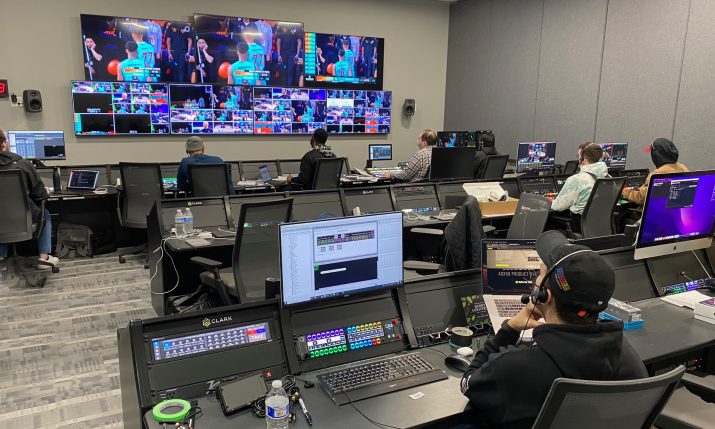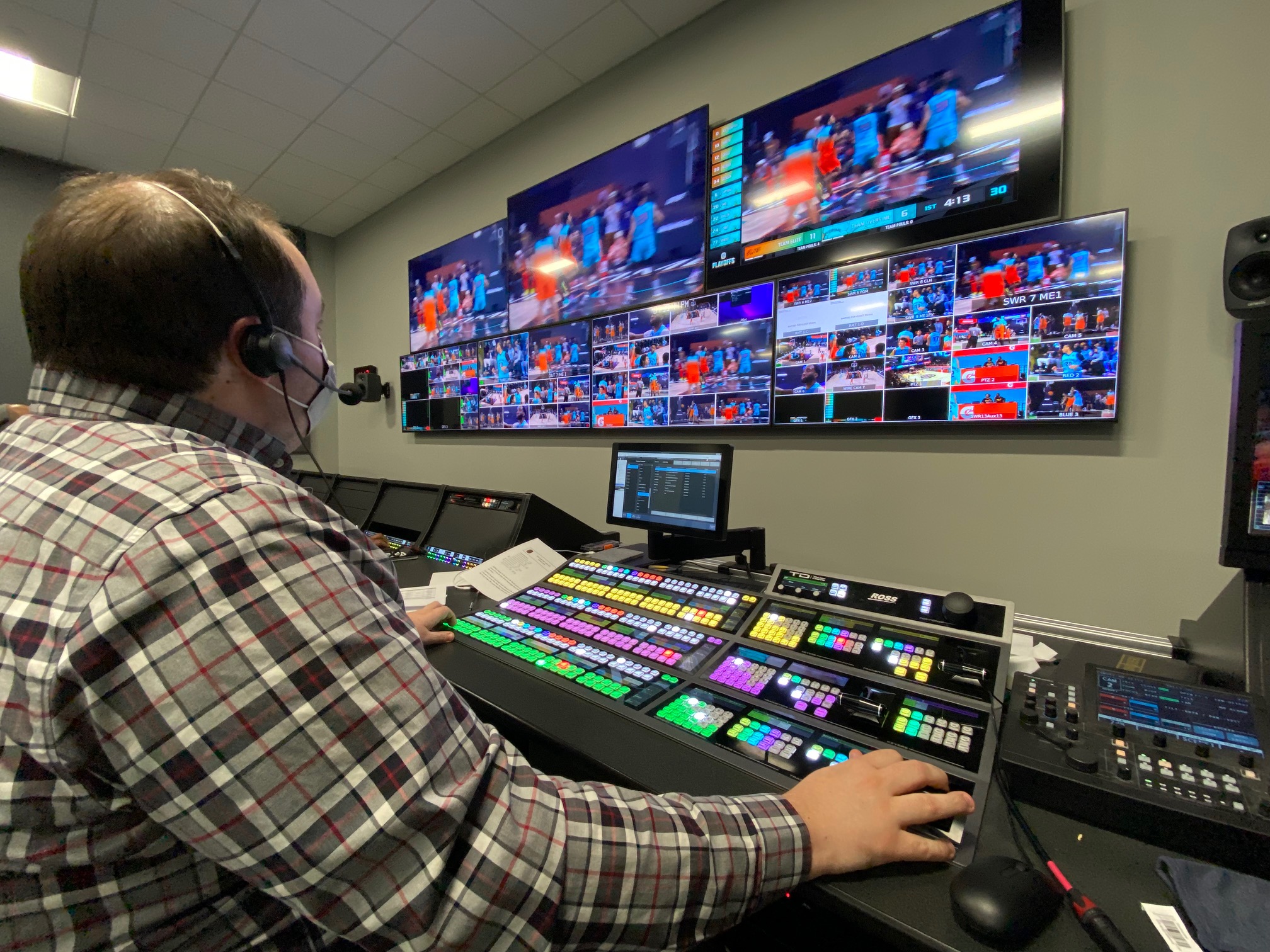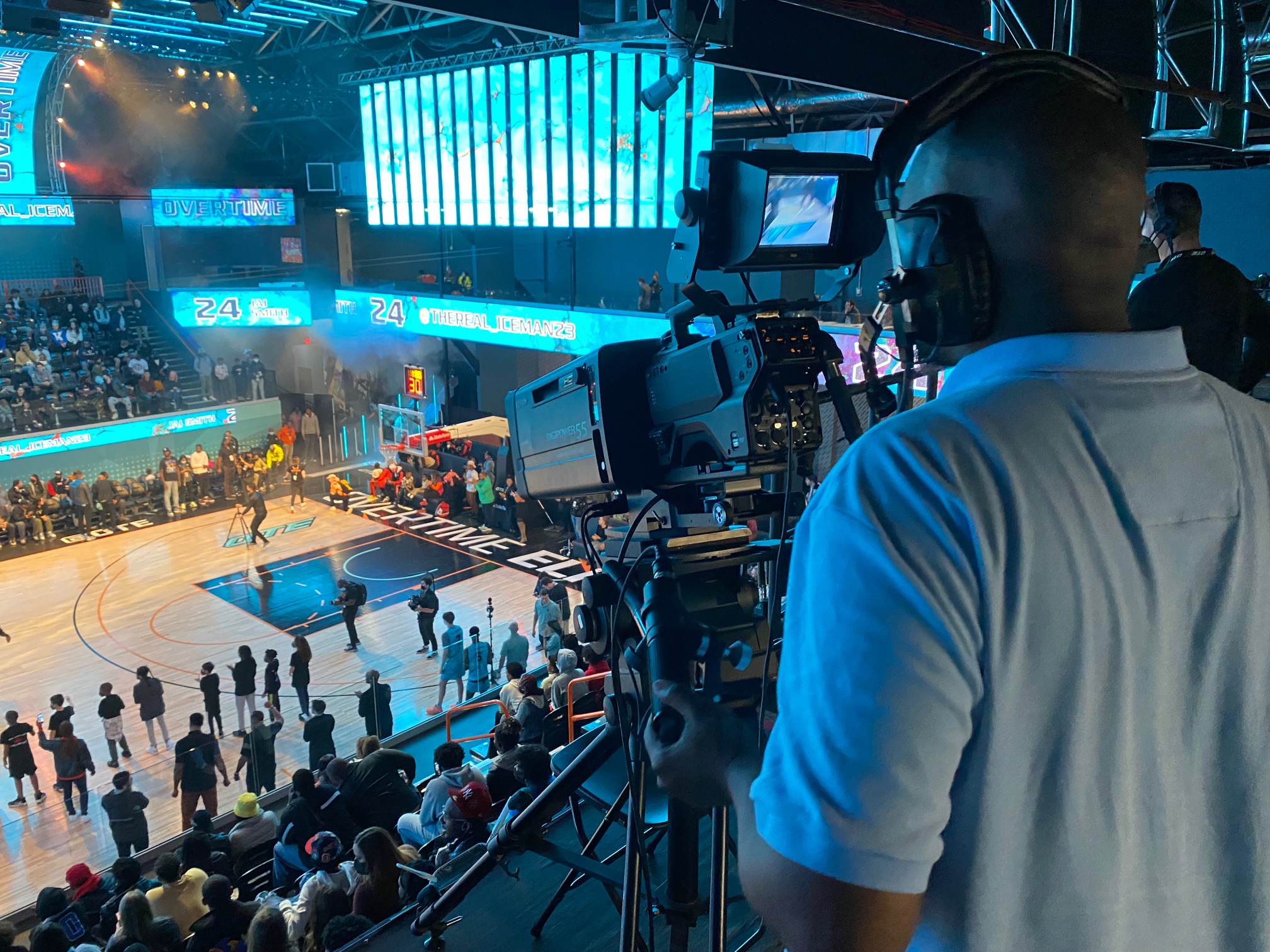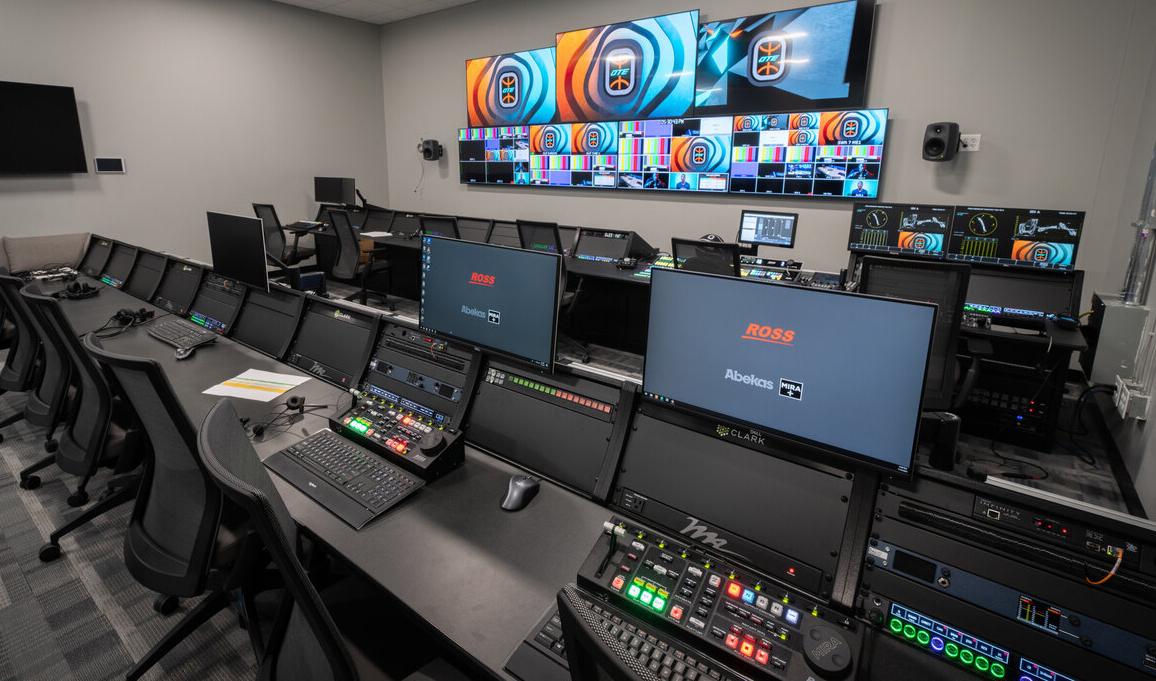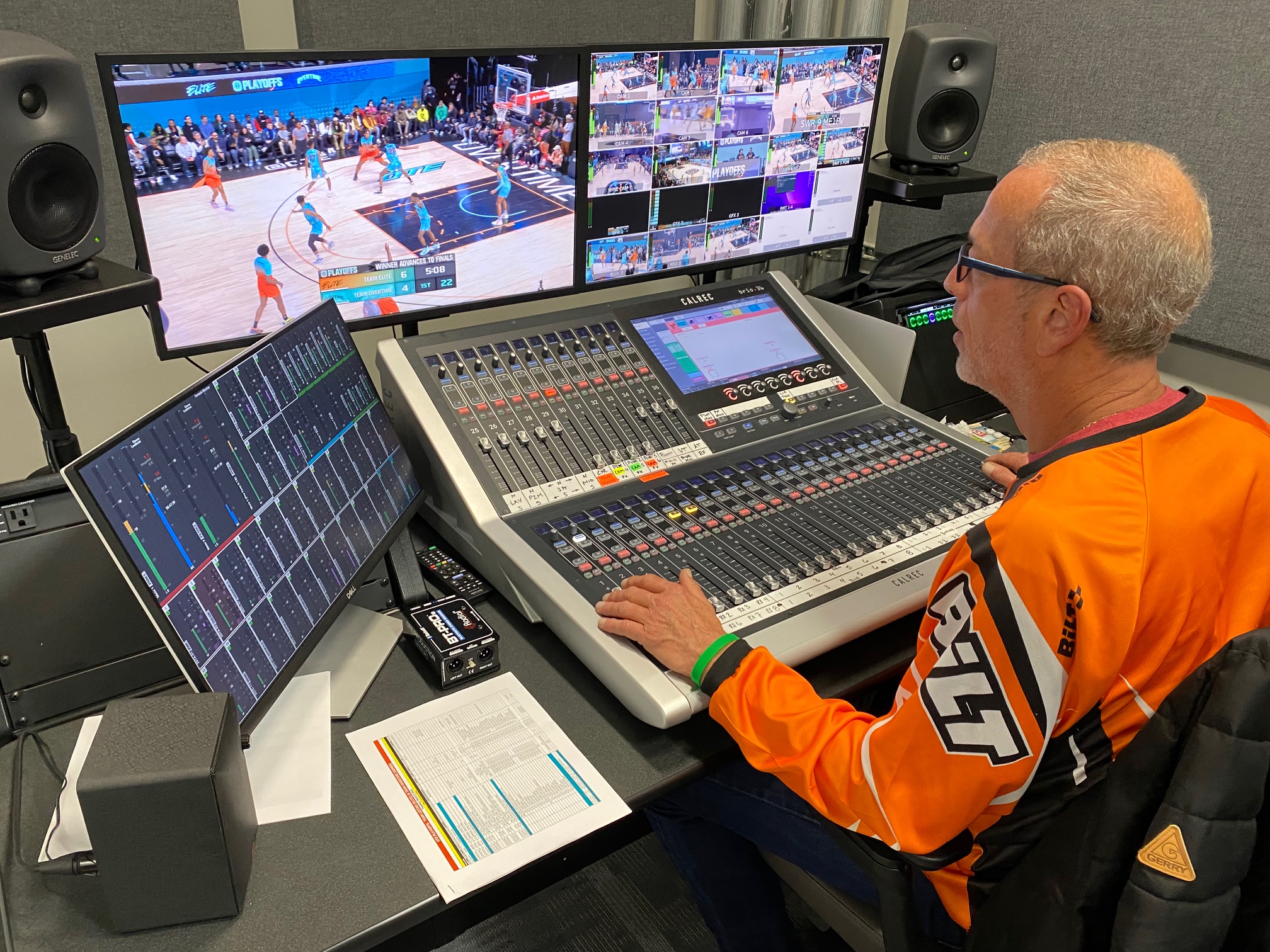Overtime Elite’s First Hoops Season Relies on Broadcast Infrastructure for Digital- and Social-Focused Content
Although games are not broadcast live, OTE Arena features a full live-broadcast ecosystem
Story Highlights
When sports–social-media outfit Overtime announced plans to launch Overtime Elite (OTE) — a basketball league offering a new path to the NBA for top high school players — it was looking to revolutionize the way sports leagues connected with younger fans. In OTE’s debut season, which wrapped over the weekend, that meant focusing on distributing short-form broadcast-quality content to digital and social-media outlets rather than delivering a traditional linear broadcast.
Although games are not broadcast live, OTE Arena features a broadcast-control room and high-end production ecosystem at OTE Arena, the new 103,000-sq.-ft. facility Overtime built in Atlanta’s Atlantic Station.
Think of OTE Arena as a content-production house that happens to have a basketball league playing in it. In addition to housing a basketball arena with state-of-the-art lighting and LED boards to serve fans, the facility also features a boarding school and dorms for the 27 high school-age athletes (all earning at least $100,000 per year) who play on the league’s three teams (Team Elite, Team OTE, and Team Overtime).
OTE Arena: Basketball Court, Broadcast Facility, Boarding School All in One
Overtime Head of Production and Technology Matthew Montemayor, who spent 16 years as director of production for the Atlanta Braves, joined the team last June to help build the broadcast side of the facility on an extremely short timeline for the start of the season in October. Although the plan was not to broadcast games in OTE’s first official season, Montemayor emphasized the importance of creating a broadcast-quality production facility to serve OTE’s unique needs.
“On the surface,” he notes, “we’re set up just like any broadcast [facility] would be. We have coverage cameras that we use to create a broadcast line cut. But we are built for speed in order to feed video to our [digital-]content team. We cut our show just like any basketball broadcast would be cut but don’t actually broadcast that feed. Instead, we deliver that line cut and other material to our editors and our content team, who cut it up and distribute it from there.”
That quick-turnaround content, including instant highlights and condensed versions of each game, is distributed to Overtime’s digital and social channels, which have more than 70 million followers. OTE focuses on one-minute game recaps and highlights for Instagram and TikTok, approximately 30-minute game recaps on YouTube, and further cut-down versions on Snapchat.
“Overtime’s business model is very different [from a traditional league’s],” Montemayor explains. “Our leadership believes that the next generation of fan doesn’t want to consume sports in the traditional way. They don’t want to necessarily sit there and watch an entire basketball game. So, even though we produce games live, we don’t [distribute] them that way because we want to better serve those [younger] fans.
In addition to the quick-turnaround content, OTE produces a weekly long-form behind-the-scenes series on the players’ experiences, along with other off-the-court content. In all, OTE’s production teams create about 25 TB of data a month that must be stored and managed for editors to access.
“We’re as much a school as we are a league,” says Montemayor, “and we want to give these guys the best possible experience. These guys are finishing high school with us, so the [documentary team] is following them to classes and practice to create this amazing ‘day in the life’ experience. It’s my broadcast team’s responsibility to help support that — whether it’s broadcasts of the games or the day-to-day needs of running a production company.”
Inside the Control Room: Broadcast-Quality Facility, Non-Broadcast Workflow
The control room at OTE Arena looks like any other production-control room, including a three-bench setup featuring a switcher, replay and graphics systems, and other typical broadcast gear. The workflow, however, is markedly different from that of a traditional live broadcast.
“We feed everything through a Ross Video Mira replay system, which creates a growing file on our EditShare server,” says Montemayor. “As soon as we press record, the editors can start working off that file as we go for quick-turnaround content. We’re also taking our entire game and condensing it down to about 30 minutes. Even though it looks similar to a traditional control room, the workflow is unique to what Overtime does.”
In addition to the Mira 12-channel replay server, OTE’s facility is equipped with a Ross Carbonite 3M/E switcher, Ross Ultrix router (96 inputs x 96 outputs, 3G-SDI), Ross Xpression three-channel character generator, and Ross PIERRO graphics-analysis system (which has yet to be used but will be in future seasons).
Also on hand are a Calrec Brio 36 Medley audio console, Riedel MFR-128 G2 Artist mainframe intercom, ClearCom partyline intercom (tied into Riedel intercom system and able to be placed in selected locations throughout the building), and AJA HELO H.264 encoder (client CDN and authentication required for externally hosted live streaming). OTE enlisted Atlanta-based Clark as its systems integrator on the project.
The control room is set up to serve OTE’s two primary production arms: the Social Media team, which uses both broadcast content and content shot on iPhones and DSLR cameras, and the Content Team, which produces condensed versions of games and long-form documentary content.
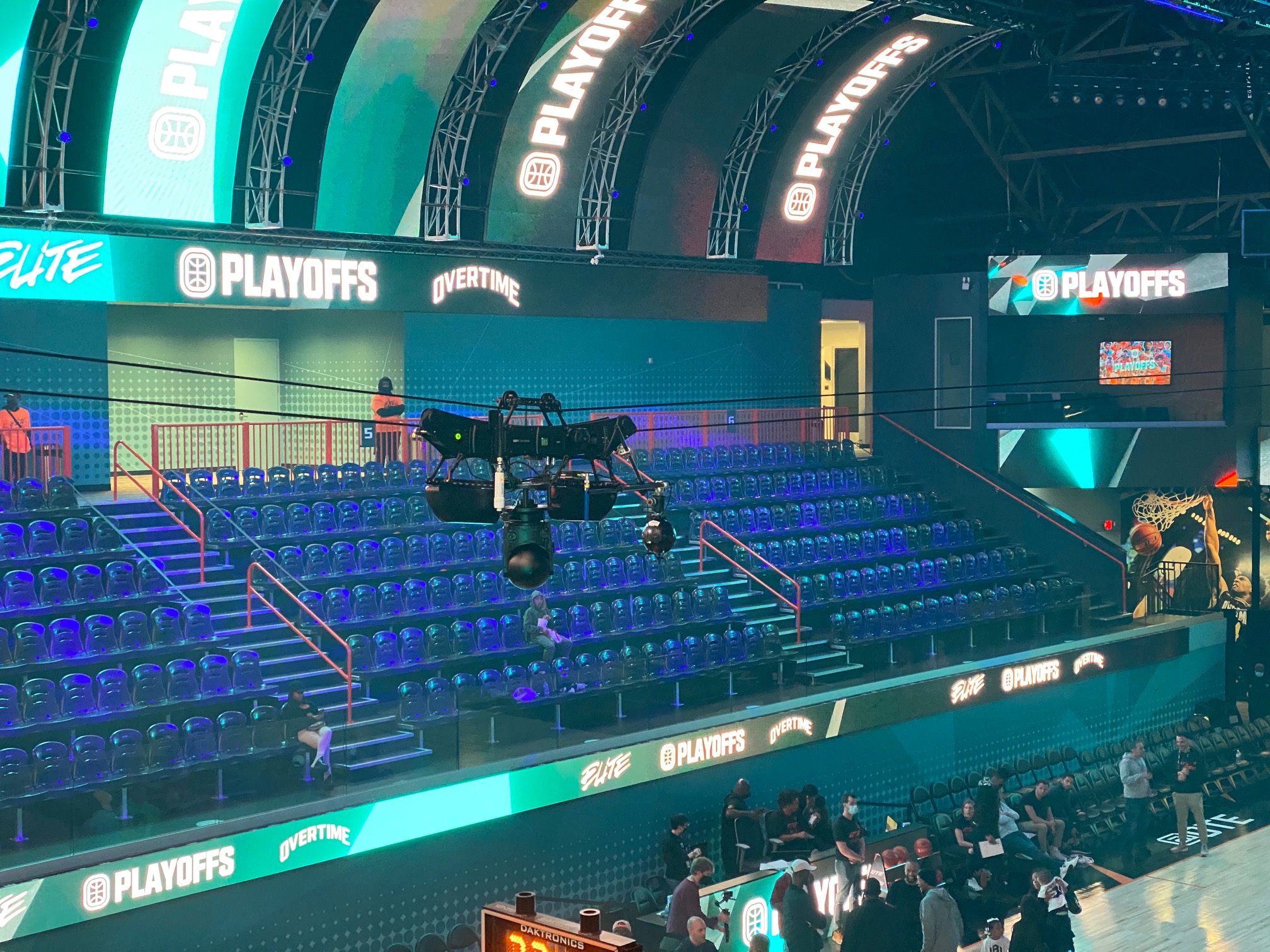
The Dactlycam two-point wired system runs the length the court \, providing an overhead look reminiscent of the popular NBA2K videogame.
“Both teams are built with the right amount of people to be able to handle this fire hose of content,” says Montemayor. “We capture a lot of stuff every week. Some weeks, we’ll do a couple nights of three games in one night back to back. Fortunately for us, we’re built to handle that. The production teams are designed with the right structure to be able to take all that stuff in and put it right back out.”
In-Game Coverage: DEFY Dactylcam, Miked-Up Players, YouTube Stars Commenting
The OTE production team deploys seven cameras — three Sony HDC-3100’s (with Fuji XA55 lenses), three Sony FX9 handhelds (Sony F4 lenses) with Wave Central wireless transmission, DEFY Dactylcam cable-cam system with a three-axis stabilized head — for game coverage and two PTZ cameras in the booth.
The Dactlycam two-point wired system runs the length of the court, offering an overhead look reminiscent of the popular NBA2K videogame.
“Everyone has seen cable cams before,” says Montemayor, “but, since this is our league and our building and our rules, we can push the envelope on where we place that camera. We fly it directly over the baskets end to end to give you an NBA2K look. We don’t have a centerhung scoreboard or the same restrictions that an NBA team might have, so we can hang it pretty low. It’s an angle that I’ve never seen in basketball before. We are right over the action, getting as low as we can without getting in the way of play on the court.”
On the audio side, OTE regularly mikes players with Q5X player mics under their jerseys to provide clips for both short and long-form content.
“All that miked-up [content] is being captured, iso’ed, and cut together into the line cut,” says Montemayor. “We also use that for a wide scope of digital [distribution outlets] — everything from instant highlights to long-form documentary [content]. We try to capture everything we can to give as much freedom to the content teams as possible when they are creating.”
Instead of traditional play-by-play and color commentators, the action on each OTE game is called by YouTube stars and other social influencers recruited by AMP Studios.
“They don’t call the game [traditionally]: it’s less play-by-play and more just conversational,” says Montemayor. “That gets mixed into the broadcast line cut and cut down into the recaps. We also use snippets of really good calls for the short-form and documentary [content].
Inside the Arena: Intimate Feel Still Packs a Powerful Punch
Although OTE Arena seats just 1,200 fans, much of the in-venue technology is on par with an NBA or high-level college hoops arena. The broadcast line cut created in the control room is fed into the main LED board (with the exception of the commentators), and the lighting and LED systems inside the bowl offer fans a top-shelf experience. OTE also deploys in-house sidelines hosts and hype talent to entertain fans during breaks.
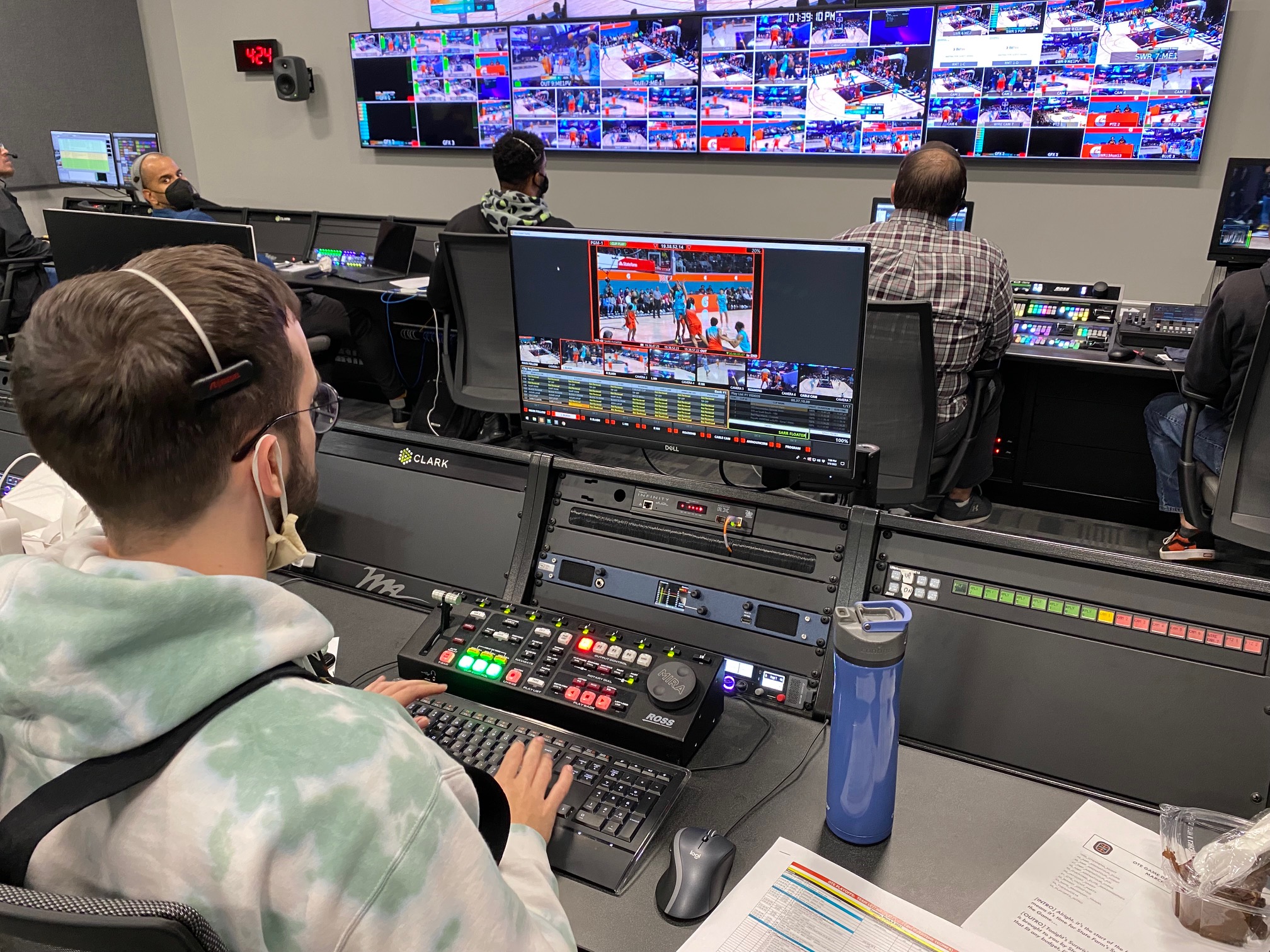
The OTE control room feeds all content through a Ross Video Mira replay system, which creates a growing file the editors to access in-game.
“It looks and feels a lot like an NBA game,” says Montemayor. “The most unique thing about our arena is that, since it’s a smaller form factor, you feel much closer to the court. It’s very intimate, but it’s also packed full of amazing LED, lighting, and sound systems. It’s the best of both worlds.”
All Eyes on the Future: VR, Live Broadcasts, What’s Next
With its first official season in the books, OTE now has its sight set on the future. Although Overtime Co-Founder/President Zack Weiner has hinted that he sees potential for live game broadcasts with a media-rights partner, for now, OTE continues to be focused on reaching young fans where they live: on digital and social.
To do that, OTE’s production team intends to continue to innovate and seek out the next great technology for fans. For example, this season, OTE partnered with Meta to produce immersive VR experience for a pair of OTE slam-dunk contests. According to Montemayor, that’s likely only the beginning.
“What I love most about Overtime is, you never know what’s coming next with our company,” he says. “Overtime is very innovative, and we are always pushing the envelope in terms of technology and what’s new that can capture young fans’ attention. We’re always looking for the next cool thing that can bring fans close to the action.”
